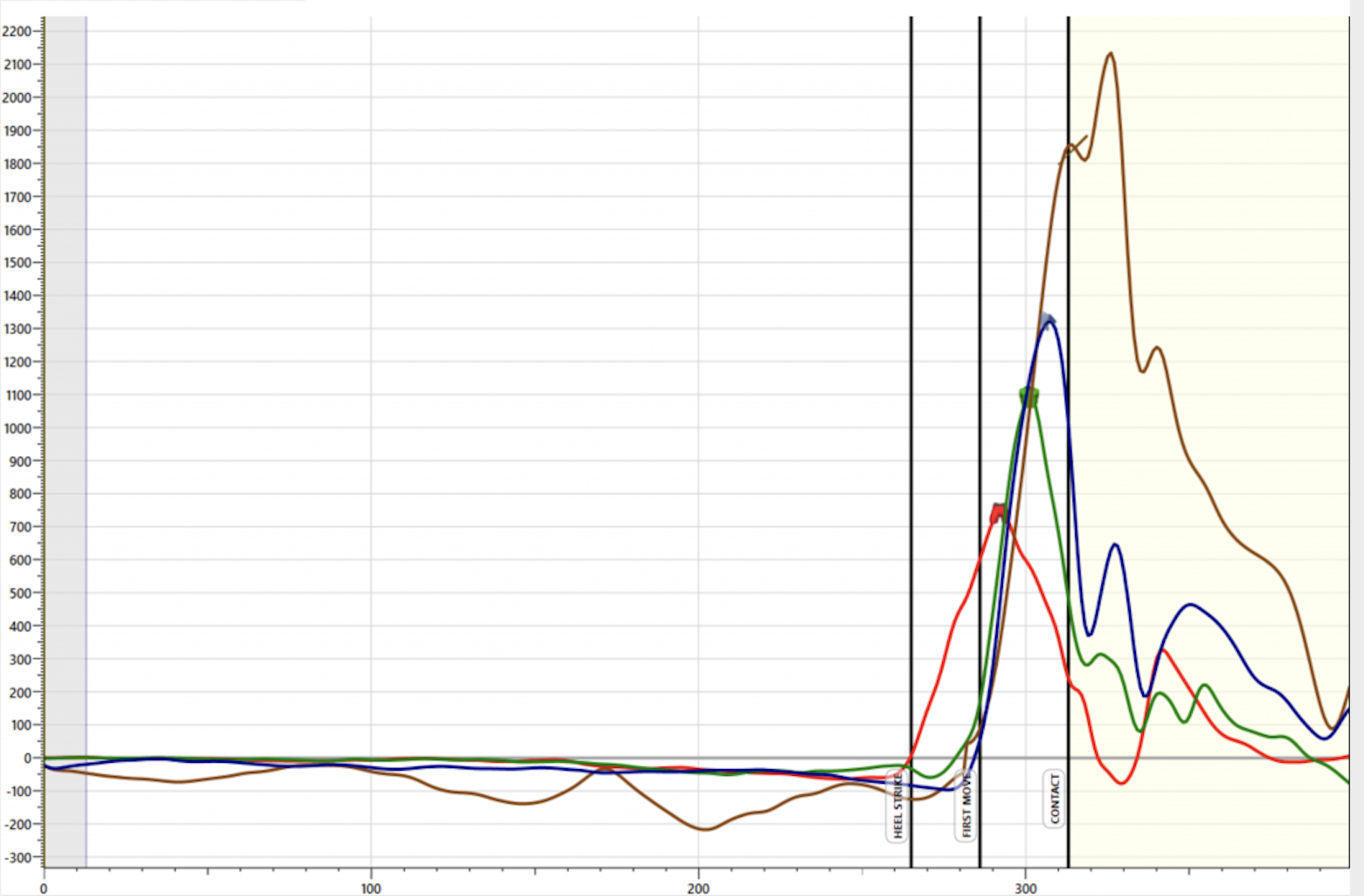Sequencing vs. Efficiency
I picked up on this from a conversation with Will when talking about the idea of efficiency. When it comes to movement, efficiency is what we’re trying to create. Serge Gracovetsky talked about the importance of efficiency in his 1988 book The Spinal Engine suggesting that as a biological system, we strive for the conservation of energy as a means for survival. In essence, the species that does the most with the least is most primed for survival. There’s a reason why the best athletes in this world seem to make really tough things look incredibly easy. They’re producing the most amount of force with the least amount of energy. This is efficiency in its simplest form.

Yordano Ventura–The Easiest 94mph Warm-Up Toss of All Time (after being hit by a comebacker). pic.twitter.com/yxES5xph73
— Rob Friedman (@PitchingNinja) December 2, 2017
Being able to maximize efficiency requires athletes to properly segment how that energy is captured and transferred up the chain. K Motion is a popular sports technology product that helps visualize this transfer of energy from the pelvis, trunk, arms, and eventually to the bat/ball. In a good sequence, all four segments should accelerate and decelerate in a steep peak where each segment overtakes the next after it reaches its max speed. The correct order of this sequence should be pelvis first followed by the trunk, arms, and then bat or ball. If the sequence is off or if the segments do not accelerate/decelerate sharply, it is going to be very hard for the athlete to efficiently transfer energy. However, being in sequence does not mean the athlete is efficient.

To determine efficiency, Will talked about the importance of using full speed video. Looking at a sequencing graph can show you what is happening, but it does not reveal how it is happening. This is why Eugene places so much importance in capturing video. An athlete can have a really good sequence, but how he got there does not mean he did it efficiently. Sequencing graphs don’t quite tell you the entire story. Efficiency comes down to making the most economical use of the resources athletes have at their disposal. You can have a pitcher who’s coming at you with arms and legs that’s in sequence, but it doesn’t mean they are efficient. If you want to determine whether a sequence is efficient or not, watch the film and see how easy (or not so easy) they are capturing energy. There’s a reason why the “old school” guys used to cue less is more – it’s because it works. Understanding sequencing is an important piece of the puzzle, but it is not to be confused for efficiency.
The Brakes and the Rubber Band
The human body is one interconnected system of bones, muscles, tendons, ligaments, and joints that are intertwined through a giant spider web known as fascia. Fascia plays a crucial role in human movement because it strings everything together, thus playing a role in the transfer of energy. Throughout our body we have four major fascial slings which work like rubber bands to create movement by pulling out slack at optimal moments of time. The best way to describe this is to think about if you were to pull a car with a rope, you would need to first pull the rope taught before you could begin to pull the car. When you pull the rope tight you have removed slack just the way your muscles do when you create movement. However, not every player has the same length of rope. Guys who have to pull more slack out (ex: Donaldson, Chapman) are known as loose movers. Guys who have to pull less slack out (ex: Verlander, Trout) are known as tight movers. Both types of players need different strategies to learn how to most optimally tighten their rope so they can produce efficient movement.

This is where the importance of the brakes comes in. The brakes work by using the fascial slings to create tension so energy from the movement can be dissipated. Inability to turn on the brakes leads to movement compensations that can impact force production, movement efficiency, performance, and health. For example, a hitter who lacks breaks is going to be more prone to yanking balls and pulling off offspeed pitches. They don’t have the ability to stop rotation after the swing which impacts their ability to keep good direction through the middle of the field. This yanking motion prevents segments from decelerating resulting in an inefficient sequence. It also can create lower back pain due to the aggressive rotation and lack of stability throughout the movement. If we look at the pitching side, a pitcher with weak brakes might have a tendency to spin out of their front side causing them to pull pitches to their glove side. This creates a poor decel pattern that causes the pelvis to drag the torso and the arm. This prevents the arm from capturing energy and puts it in a position where it cannot slow down safely. If the muscles needed for deceleration cannot be turned on, areas such as the elbow and shoulder are going to take a beating.
A large engine cannot work efficiently without a strong set of brakes. Placing the engine of a Ferrari into the frame of a Prius is a recipe for disaster. Your body is constantly working to protect you; it will not put you in a position where your decelerators can’t counteract your accelerators. If you’re only teaching the engine, you’re missing out on a huge piece for your athletes.

